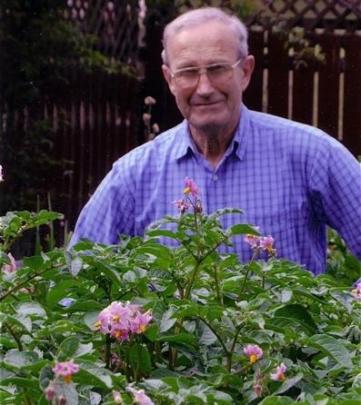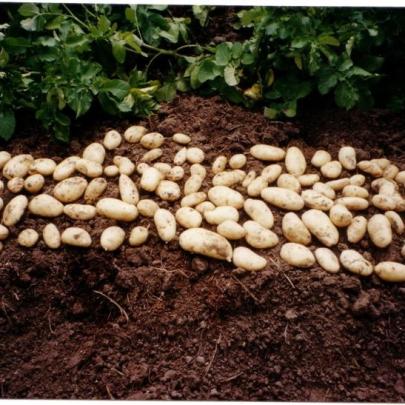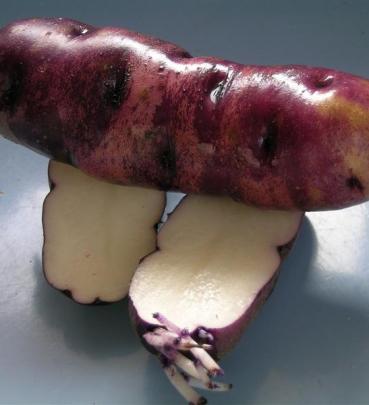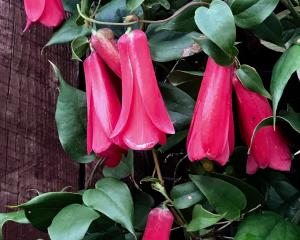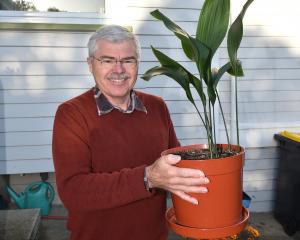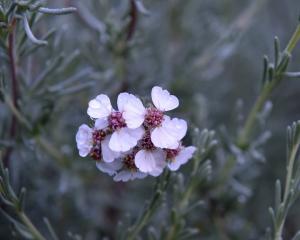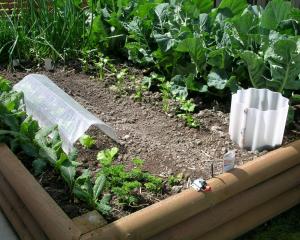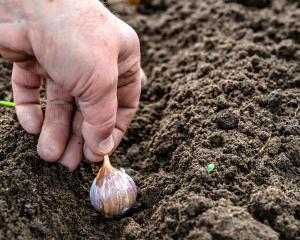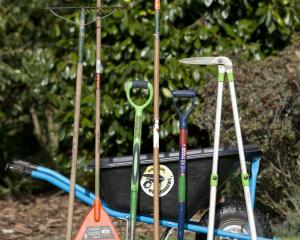Dunedin Horticultural Society president Dave Young loves his taties and is delighted the importance of potatoes is being recognised through the United Nations' decision to make 2008 the Year of the Potato.
The reason behind the UN declaration was to try to improve potato production in poorer countries, as the vegetable is rich in carbohydrates, protein, vitamin C and minerals.
Potatoes have a long history as a food crop, having been grown in Peru for at least 8000 years. Scientists have identified more than 200 wild species, most of which have knobby tubers with deep eyes.
A member of the nightshade family, potatoes were taken to Europe in the late 16th century by the Spaniards, who had plundered the Inca kingdom. The vegetable reached England about 1590.
The Spanish conquered South and Central America; potatoes conquered the world and now are grown on almost 9 million ha of farmland, with the world's biggest producer, China (at 72 million tonnes), accounting for more than 20% of the world's crop. India, Iran, Bangladesh are next. New Zealand comes in at 24.
Attempts are being made by the Peruvian Government to wean its people off wheat-flour bread and rice, and back on to potatoes. Bread baked with potato flour is one way the Government is trying to reduce Peru's dependence on imported wheat.
It has been estimated that 97% of New Zealanders eat potatoes and half of us eat fresh potatoes - as opposed to crisps - at least four times a week.
About 12,000ha of potatoes are harvested annually, two-thirds of them in the North Island. The bulk of the South Island commercial crop is grown in Canterbury.
With about 42 tonnes per hectare, New Zealand has some of the world's best potato yields.
Mr Young, who would like to see more home gardeners growing potatoes, was looking forward to this weekend's horticultural society autumn show to see the results of a giveaway the society had last year.
"At our spring show, we gave away seed potatoes.
"I've heard at least one person who received gift seed potatoes at that show is bringing the produce to this show,'' he said.
There are six classes for those showing potatoes and society members have been encouraged to exhibit to support the UN Year of the Potato.
There will also be a display of eight to 10 modern varieties and some heritage potatoes. Heritage varieties include the likes of Bluff whaler, Portobello purple and pink fir.
Many still show the distinctive deep eyes of their South American ancestors. Dunedin Environment Centre member Liselle Wood grows 43 heritage potato types and her organisation will help people identify what they have.
Kakanui vegetable grower Jim O'Gorman is working with the Koanga Institute in Northland to help create a seed bank of old varieties.
What to grow is the big question for the home gardener, as the modern choices in the South seem limitless.
"It would be ridiculous to plant potatoes in Dunedin now. It would be far better to put seed potatoes into trays and let them sprout,'' Mr Young said.
He recommended Jersey benne as a new potato.
They should be lifted and eaten as soon as the tubers are big enough.
Mr Young said if the soil was in good condition, Jersey bennes could be planted in late August and gardeners would be guaranteed potatoes for Christmas.
The Jersey benne planting could be followed by red king, defined as a second early variety.
Main-crop potatoes that could be stored for later use should be planted in October in well-prepared soil, enriched with well-rotted compost but no fresh manure, as that made the skins scabby
No lime either, Mr Young said as that would give rough skins.
He suggested three excellent main-crop varieties: Dutch-bred liseta, New Zealand-bred karaka, and the German agria
He encouraged gardeners to try several varieties and applauded the garden centres that offered named varieties loose so people who wanted to try something different, or who had small gardens, had more options.
Plant seed potatoes about 25cm deep on a bed of pine needles.
Add potato fertiliser before covering and keep the soil mounded up around the potatoes as they grew or the tubers would push through and turn green.
Mr Young said pine needles were an old English technique that not only gave potatoes the slightly acid soil they liked but also deterred wireworm.
In a dry season, they needed to be watered, as even moisture was one of the secrets of good potato growing.
The Dunedin Horticultural Society's autumn show is being held this weekend at Forbury Raceway, Victoria Rd, St Kilda, Dunedin.
The show is open to the public from 2pm to 5pm tomorrow and from 10am to 4pm on Sunday.

